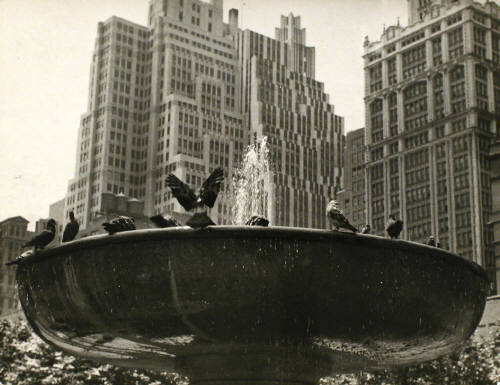
what the fork???
Yesterday, we went to the Jeu de Paume museum in Paris to see a massive retrospective of the photographer Andre Kertesz.
Kertesz is rated as one of the world’s great photographers, and his work spans much of the 20th Century. He lived and worked in both Paris and New York.
The retrospective occupied two floors of the Jeu de Paume, most of the museum in fact, and was laid out in chronological order, starting with his earliest work in Hungary in the 1920s. He bought his first Leica in 1928, and you could see the improvement immediately.
Most of the early prints measured no more than 2 inches by 2 inches. Kertesz apparently needed to save money and so made very small prints, so said the legends on the wall.
According to Wikipedia, Kertesz is today ‘considered one of the seminal figures of photojournalism’.
Having spent about 3 hours at the exhibition, I cannot for the life of me figure out why.
The vast majority of Kertesz’ photos are boring.
He had a penchant for taking photos of roofs and chimneys apparently.
snore!
The ‘fork and shadow’ thing above is probably his best known, but also about the most interesting in an exhibition of thousands of works.
Most of them were more like this:

Which is a shot that pretty much any tourist who goes to NYÂ with an iPhone can get. Or certainly any first year photo student at NYU.
For a while Kertesz went through a period of ‘bendy mirrors’, which was considered way ‘cool’ in 1952, apparently.

This is, of course, immediately familiar to anyone with a Mac and photobooth.
In the 1950s it was considered radical.
Now 8 year olds do it.
After that, it is considered stupid.
This is not to say that Kertesz work is banal (which I think it is), but rather to say that Kertesz’ work suffers from the impact of technology.
Or rather let’s say that in the beginning, Kertesz work benefitted from the impact of technology and later suffered from the same thing.
When Andre Kertesz began to make photographs in Hungary in 1912, very few people were making photographs, In fact, very few people, particulary in Hungary, even had cameras. So when he took his camera to the front in World War I and began to photograph the Austro-Hungarian Army in the field, it was considered pretty intersting. Even if the photos were simply men sitting on a step staring in the camera – no one else was really doing it. Even if the images measure 2 inches by 2 inches.
Today, of course, making 2 inch by 2 inch black and white stills of 3 guys in Iraq staring in the camera would hardly grace the walls of any museum in the world… or even be something you might show to a friend. Whip out your iPhone and say ‘hey, check this out, from my cousin in Falujia”. I don’t think so.
Likewise his seemingly endless fixation on buildings in Manhattan after he came to New York.
“Hey’ wanna see my photos of the outside of 30 Rockefeller Center?”
um… later…
“Just look at all those windows!”
No. What made Kertesz photos interesting in the 1920s and 1930s was the he was the first one to do something that very few people were even doing at all.
The same thing, I think, may be true of video and television.
in an era in which there were only 3 networks and a limited window for broadcast, there were very few TV shows to be made and almost no one ‘made video’ at home.
The very idea was utterly unthinkable.
It was so complex and expensive.
Maybe you knew one nut who had a SONYÂ 1″ portable recorder but that was about it. And as for editing? I knew people who were editing 1″ video tape with a razor blade and scotch tape.
So we have at places like The Museum of Broadcasting, the ‘Golden Age’ of TV with classics like Edward R Murrow’s Harves of Shame.
Take a look at it some time.
About as creative as Kertesz rooftops.
OK, Murrow and Friendly were also the first ones to do it – like Kertesz… but interesting? Shockingly banal. Interesting as a ‘period piece’ yes. (The early morning gathering of share croppers Murrow and Friendly filmed is largely made up of black people, not surprisingly. Murrow’s comment – “This isn’t the Congo. This is America”. Hoo boy!!!!! Hey CBS, wanna air that one today???)
Well, there isn’t too much exciting or novel or compelling about the shadow of a fork and there isn’t too much compelling or exciting about 5 castaways stranded on a desert island (except that they can build a radio out of a coconut but can’t seem to fix a hole in a boat.
The sheer banality of Kertesz work reminds us that as more and more people got access to film cameras, the notion of just pointing the camera at a building or a window or a fork on a plate no longer passed as ‘fascinating’, so too the notion of just turning on a video camera and pointing it at a talking head in a studio also requires little in the way of talent.
As anyone can do it. we have a right to expect more.
And as photography became far more interesting as more people started to practice the craft, so too can we expect to see far more interesting videos.
In the meantime, Andre Kertesz is where he belongs… in a museum.